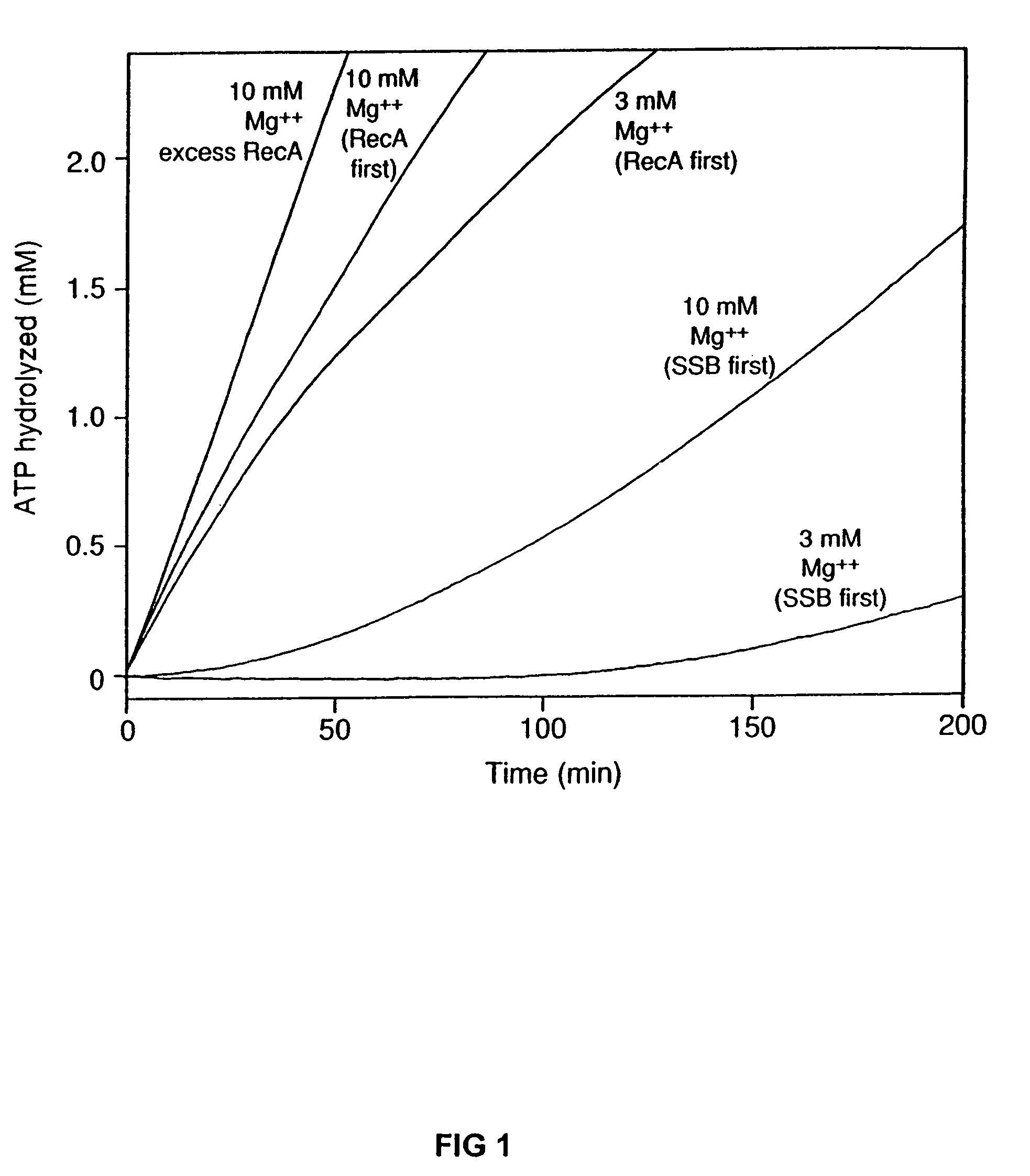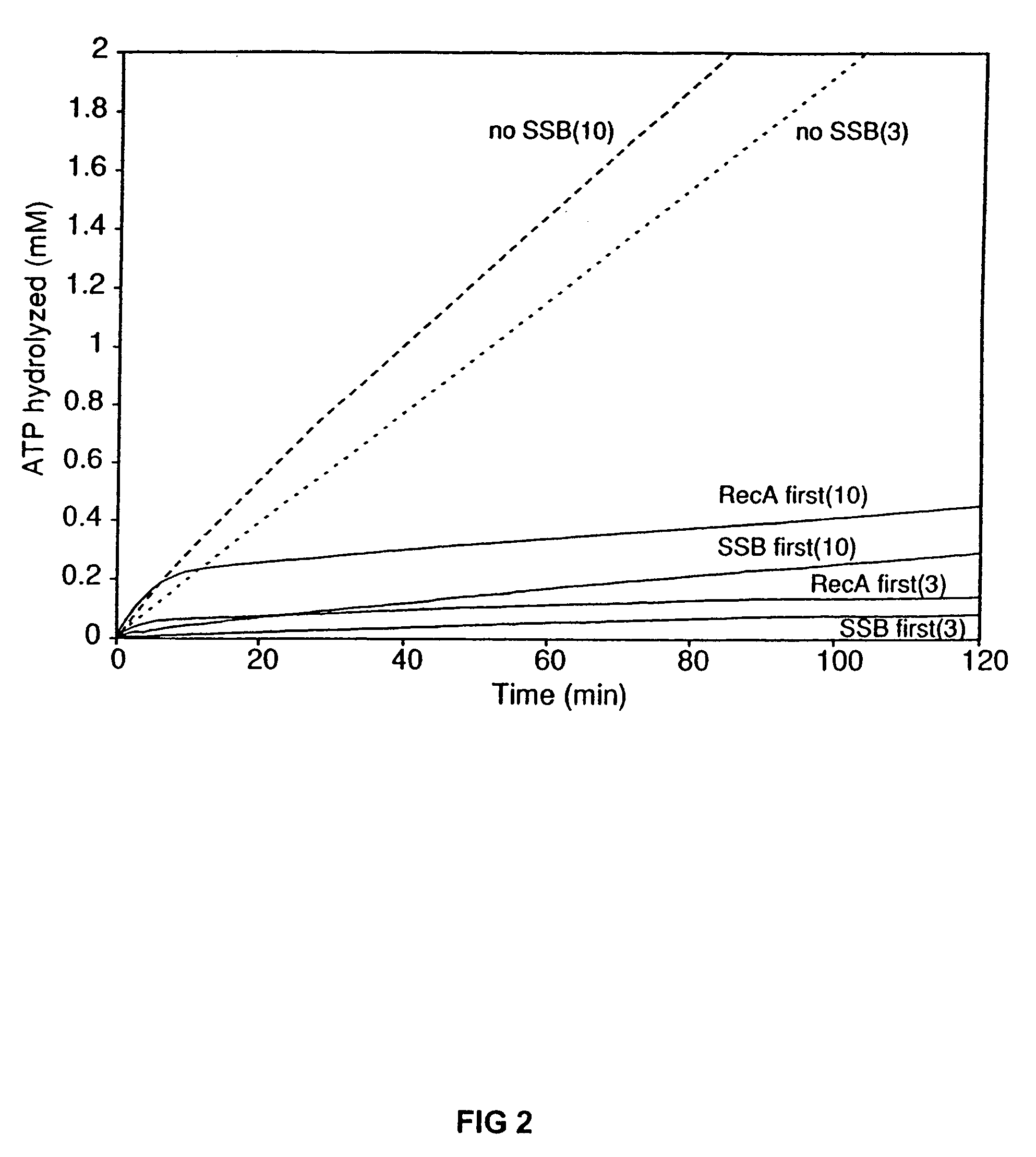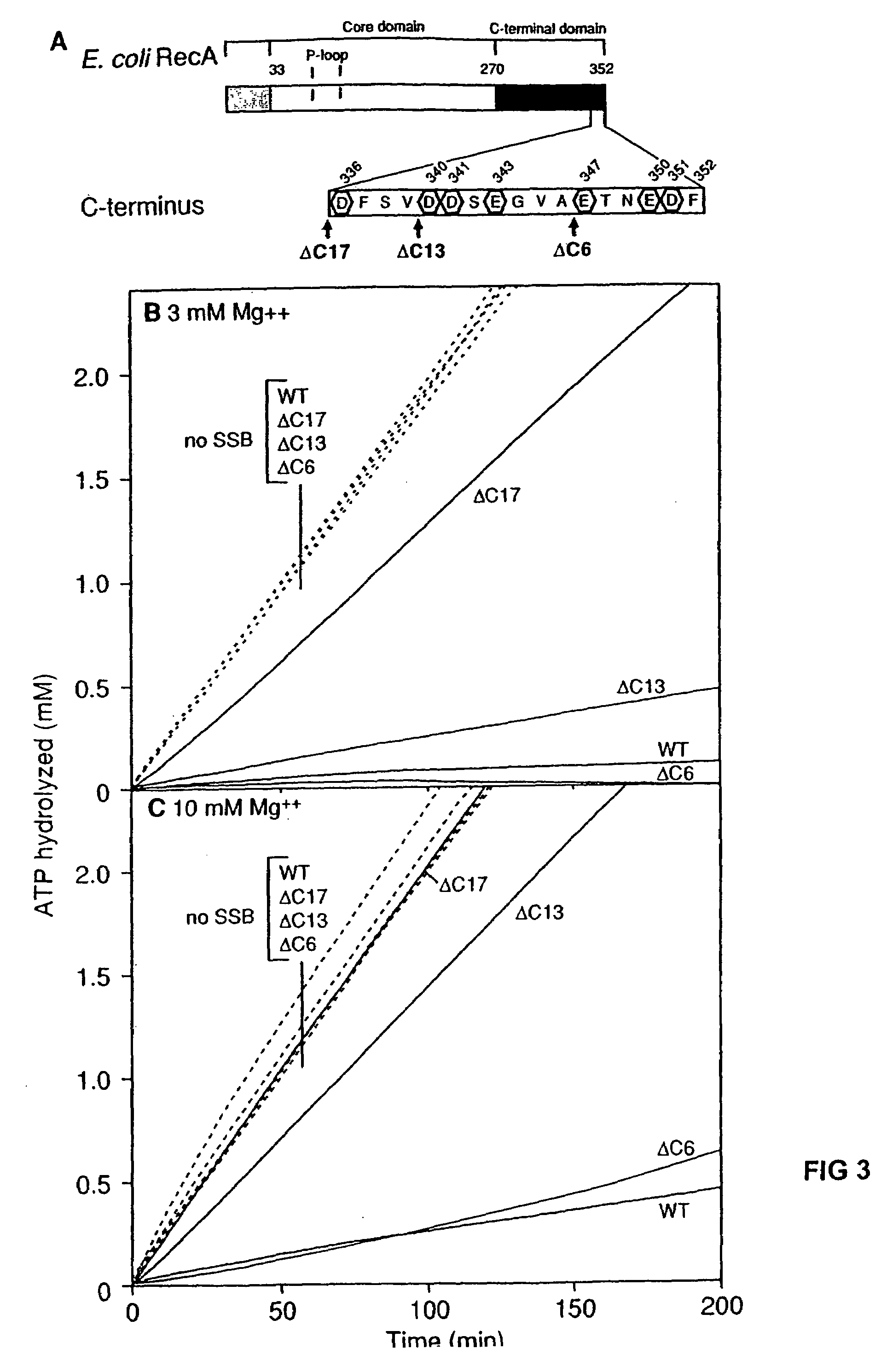RecA mutants
a mutant and recombinant technology, applied in the field of reca mutants, can solve the problems of no group has been able to reproduce, reca deletions are still much less stable than reca deletions, and the reca mutants cannot effectively displace ssb from linear single stranded dna, so as to achieve the effect of broadening the ph-profile and increasing the concentration of mg2+
- Summary
- Abstract
- Description
- Claims
- Application Information
AI Technical Summary
Benefits of technology
Problems solved by technology
Method used
Image
Examples
example 1
Proteins and Biochemicals
[0069]E. coli SSB was purified as described (47, the contents of which is incorporated by reference). SSB was stored in a buffer containing 20 mM Tris-HCl (pH 8.3), 1 mM EDTA, 50% glycerol, 1 mM β-mercaptoethanol and 500 mM NaCl. The concentration of the purified SSB protein was determined from the absorbance at 280 nm using the extinction coefficient of 2.83×104 M−1 cm−1 (48). Saccharomyces cerevisiae Replication Protein A (RPA) was purified as described (49, the contents of which is incorporated by reference here in its entirety). The concentration was determined by the absorbance at 280 nm using the extinction coefficient of 8.8×104 M−1 cm−1 (50). The wild-type RecA, RecAΔC6, RecAΔC13, and RecAΔC17 proteins were purified as described (43). RecA 441 was purified using the following modification to the wild-type RecA procedure previously described (43). The initial polyethylenimine pellet was washed with R buffer (20 mM Tris-HCl (80% cation, pH 7.5), 1 mM D...
example 2
DNA Substrates
[0070]All DNA concentrations are given in terms of total nucleotides. Poly(dT) was purchased from Amersham Pharmacia Biotech, and the approximate average length is 229 nt. The concentration of poly(dT) was determined by UV absorption at 260 nm using an extinction coefficient of 8.73 mM−1 cm−1. M13 mp8 bacteriophage circular ssDNA was prepared as described (52). The concentration of M13 mp8 ssDNA was determined by UV absorption at 260 nm using the extinction coefficient, 9.03 mM−1 cm−1.
example 3
ATP Hydrolysis Assays
[0071]A coupled spectrophotometric enzyme assay (53 and 54, the contents of both is incorporated by reference here in their entirety) was used to measure the ssDNA-dependent ATPase activities of the wild-type RecA, RecAΔC6, RecAΔC13, and RecAΔC17 proteins. The regeneration of ATP from PEP and ADP was coupled to the oxidation of NADH and monitored by the decrease in absorbance of NADH at 380 nm. The 380 nm wavelength was used so that the signal remained within the linear range of the spectrophotometer for the duration of the experiment. The assays were carried out on a Varian Cary 300 dual beam spectrophotometer equipped with a temperature controller and a 12 position cell changer. The cell path length and band pass were 0.5 cm and 2 nm, respectively. The NADH extinction coefficient at 380 nm of 1.21 mM31 1 cm−1 was used to calculate the rate of ATP hydrolysis.
[0072]The reactions were carried out at 37° C. in 25 mM Tris-OAc (80% cation), 1 mM DTT, 3 mM potassium ...
PUM
| Property | Measurement | Unit |
|---|---|---|
| Acidity | aaaaa | aaaaa |
| Basicity | aaaaa | aaaaa |
| Concentration | aaaaa | aaaaa |
Abstract
Description
Claims
Application Information
 Login to View More
Login to View More - R&D
- Intellectual Property
- Life Sciences
- Materials
- Tech Scout
- Unparalleled Data Quality
- Higher Quality Content
- 60% Fewer Hallucinations
Browse by: Latest US Patents, China's latest patents, Technical Efficacy Thesaurus, Application Domain, Technology Topic, Popular Technical Reports.
© 2025 PatSnap. All rights reserved.Legal|Privacy policy|Modern Slavery Act Transparency Statement|Sitemap|About US| Contact US: help@patsnap.com



